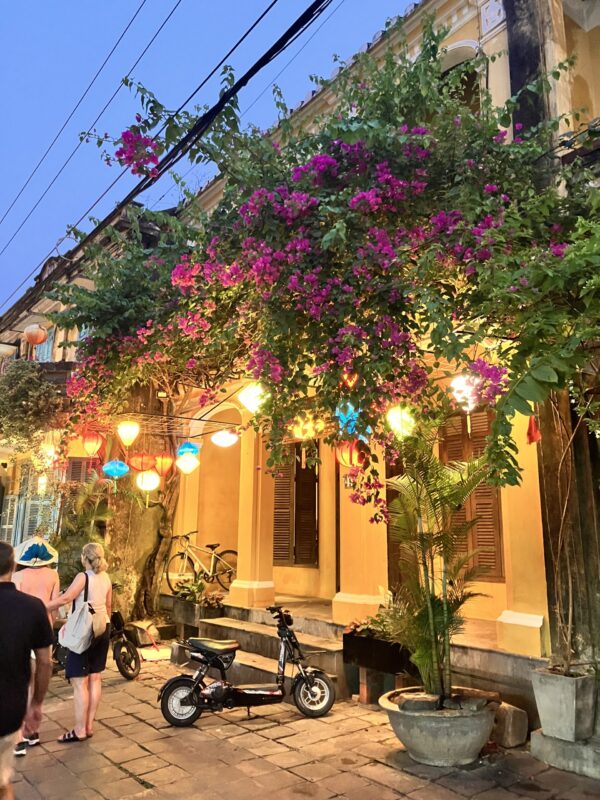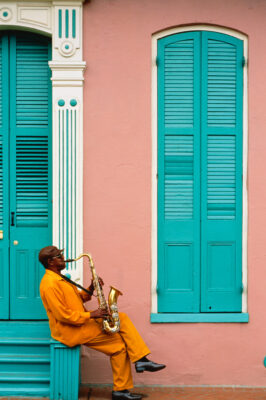
Travel
When Worlds Collide: Visiting Vietnam in 2024
Vietnam does not shy away from reminding visitors of its dark past—even as it steps into a sunny future.
I had first planned to visit Vietnam in the 1990s when the country had just begun opening up to visitors after 20 years of post-war isolation. Bicycles ruled the roads and, as a keen cyclist, I had visions of joining the throngs and seeing the country on two wheels. But life events—three children, moving to the US from the UK—put those plans on hold.
Fast forward three decades, and my vision of a pedal power culture is very last century. Bicycles have been replaced by motorcycles and scooters in the millions: two-thirds of the population now own one (although my fixation with the non-motorized version hasn’t wavered).
Arriving in Ho Chi Minh City (HCMC—although locals still refer to it as Saigon), the first thing you notice is the dizzying sea of scooters at every intersection. It’s cacophonous and chaotic: Hey, who needs rules and signaling? We often faced scooters barreling towards us in the opposite direction as we cycled along. And simply crossing the street required purpose, determination, and—sometimes literally—a leap of faith.
Everything goes by motorcycle: variously we saw four passengers (including baby); a granite countertop; dozens of eggs; a beehive; and a six-foot metal roof panel. Given the absence of border collies, motorcycles also served to herd goats in the countryside.



And it’s not only modes of transport that have changed. Vietnam’s economy is growing at the fastest rate in Southeast Asia. The change is noticeable everywhere.
Dong Khoi Street, the city’s red-light district infamous for GI R&R (known then as Tu Do) is still awash with “Massage” signs—but these days they’re of the spa variety. Seedy bars have been replaced by the likes of Hermès, Tiffany, Christian Dior, and Louis Vuitton for the influx of wealthy tourists from around the globe.
The street also houses The Reverie Saigon, Vietnam’s only Leading Hotels of the World property. The Hotel Continental, where Hunter S. Thompson documented the last days of the war in 1975 has been completely renovated. We sipped cocktails at Saigon Saigon Rooftop Bar atop the Caravelle Hotel—where foreign correspondents had their briefings and filed stories that changed the course of history. Back then, it offered a clear view of fighting across the river. Today it looks over neon-lit skyscrapers that dwarf older buildings, some looking near collapse.
Heading out of the city we saw BMW and Lamborghini dealerships. The first line of the planned metro system in HCMC is set (finally) to open this year; ground has been broken on the construction of the second; a North-South Expressway is in the works—and there is talk of a bullet train.


Countrywide, there’s a booming craft beer industry (our fellow travelers praised 7 Bridges and Pasteur Street) and a vibrant, all-day, coffee culture—typically drunk with sweetened condensed milk, or with egg yolk, creating a thick, almost mousse-like concoction which is much beloved by locals but had me defeated. (Vietnam is the world’s second biggest exporter of coffee; also, the biggest exporter of cashew nuts; and third biggest exporter of rice.)
The Michelin Guide ventured into Vietnam for the first time in 2023, awarding four restaurants one star (three in Hanoi, one in HCMC.)
We had an excellent meal at KOTO (Know One, Teach One) in Hanoi, an eaterie which also offers hospitality training for at-risk and disadvantaged youth. (Bill Clinton dropped in during his 2000 visit.)



And the culinary scene thrives outside the two major cities, too. Friends reported having one of the best meals of their lives at Aubergine49 just outside Hội An, a beautifully preserved town on the central coast designated a UNESCO World Heritage Site. No cars are allowed in its charming center where wooden-fronted shops are required by law to hang lanterns from their facades.
Fine dining aside, Vietnamese classics such as banh mi and pho are delicious—and ubiquitous—with many restaurants specializing in just one dish. In 2016, President Obama famously shared a $6 dinner with Anthony Bourdain at family-run noodle shop Bún Chả Hương Liên in Hanoi’s Old Quarter. Bun Cha is a northern specialty, similar to pho but with pork patties. The table where the two dined is now on display in the restaurant, and his meal renamed “Combo Obama.”
In rural areas, development is less in evidence but the same entrepreneurial spirit pervades. There is little mechanization and rice and chilies are laid out in the street to dry; salt is harvested from briny water. But everywhere you go, markets are teeming with an incredible variety of fruit, vegetables, meat, and seafood. No wonder, with an “anything grows” climate and over 2,000 miles of coastline.


While the country is moving on apace, there are plenty of reminders of its past. Saigon’s no-holds-barred War Remnants Museum is not for the faint-hearted. It depicts the multiple horrors of the war, from the devastating impact of Agent Orange to the grisly tiger cages—a graphic testament to man’s inhumanity to man. (The conflict is known in Vietnam as the American War—to distinguish it from the Japanese and French Wars, among others; Vietnam has faced foreign opposition many times in its history.)
You can also visit a short stretch of the Củ Chi tunnels, a few miles outside the city. This immense network of passageways dug out of the jungle dirt once covered over 150 miles in total. Low and narrow with concealed entrances, they were used not only as hiding spots, but also served as hospitals, sleeping quarters, command centers, armories, and kitchens—an entire underground military operation. Although they’ve been widened to accommodate tourists, it’s still a claustrophobic experience. You have to stoop or crawl to make your way through—an insight into how appalling the living conditions must have been in the originals.
In Hanoi’s Vietnamese Women’s Museum we were surprised to learn that 40 percent of guerillas and militia in the south during the American War were women, many of them joining up as young as 15. (Kristin Hannah’s latest novel, The Women—which topped the New York Times bestseller list—chronicles the life of a US Army nurse stationed on the front lines in 1965.)
The 50th anniversary of the fall of Saigon is just around the corner in 2025, but Vietnam’s gaze seems steadfastly focused on the future—and developing its tourist industry. Visitors are welcomed and, since it is now compulsory in schools (replacing Russian), around half the population speaks English. New luxury hotels and beach resorts are opening every year—although not all plans seem to come to fruition. We also saw many seemingly on hold indefinitely.
Halong Bay, the country’s biggest attraction (which Phang Nga Bay near Phuket subbed for in The Man with the Golden Gun, and Tomorrow Never Dies) has seen visitor numbers triple in the past decade.
Vietnam is clearly making headway in its bid to rival neighboring Malaysia and Thailand—although not in every aspect. As our guide stated, with a smile: “In Vietnam we have three S’s—sun, sea, and sand. In Thailand, they have four.”

Hero photo of Hội An by Spencer Hill



